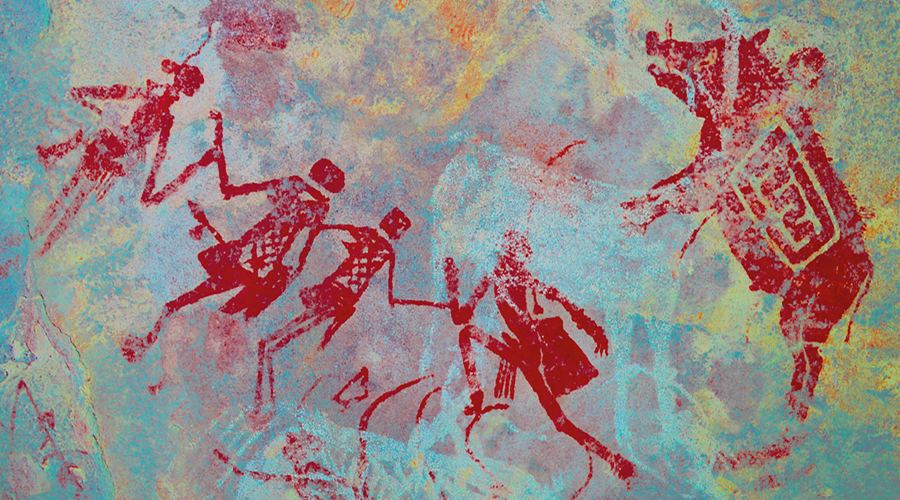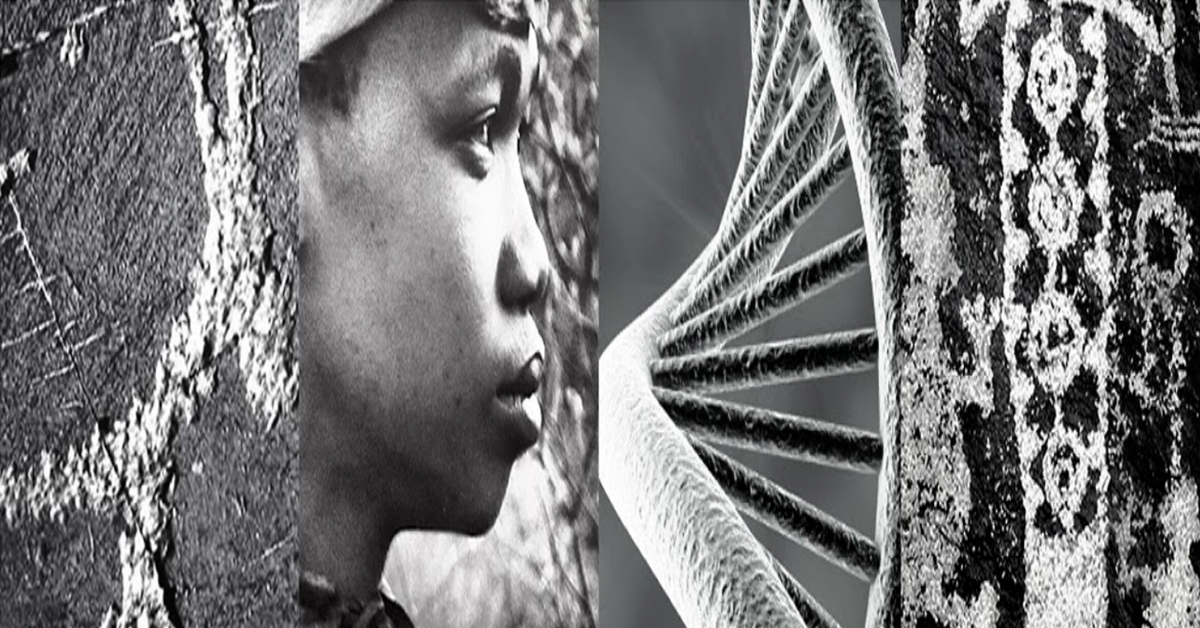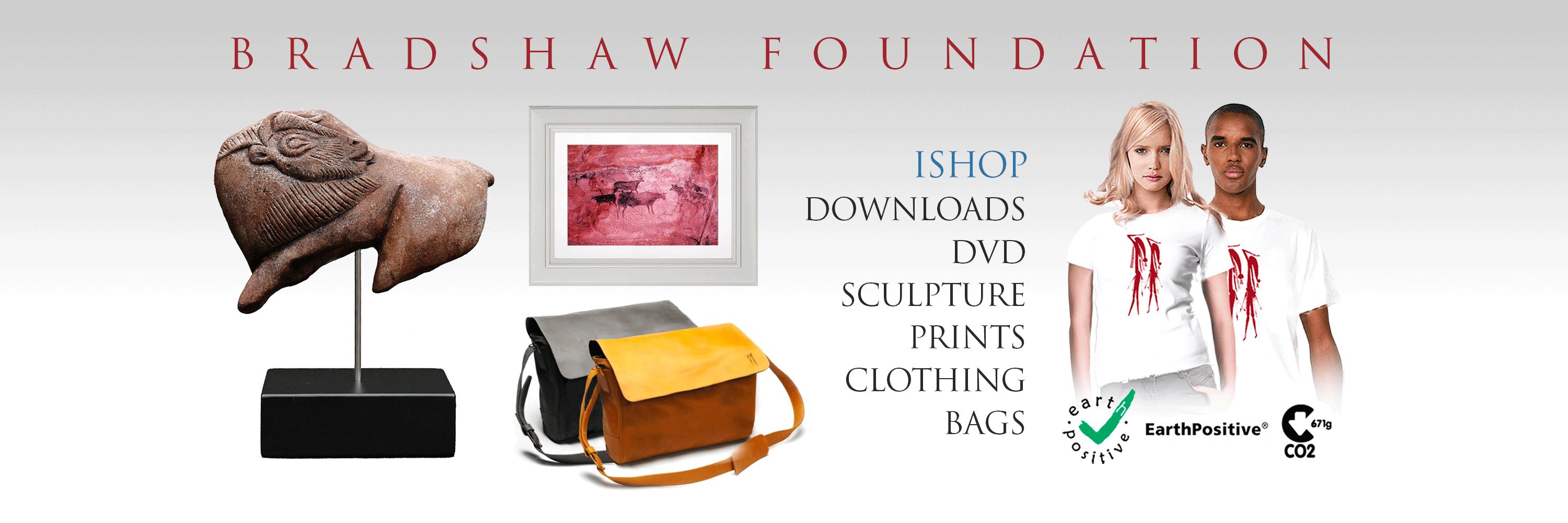

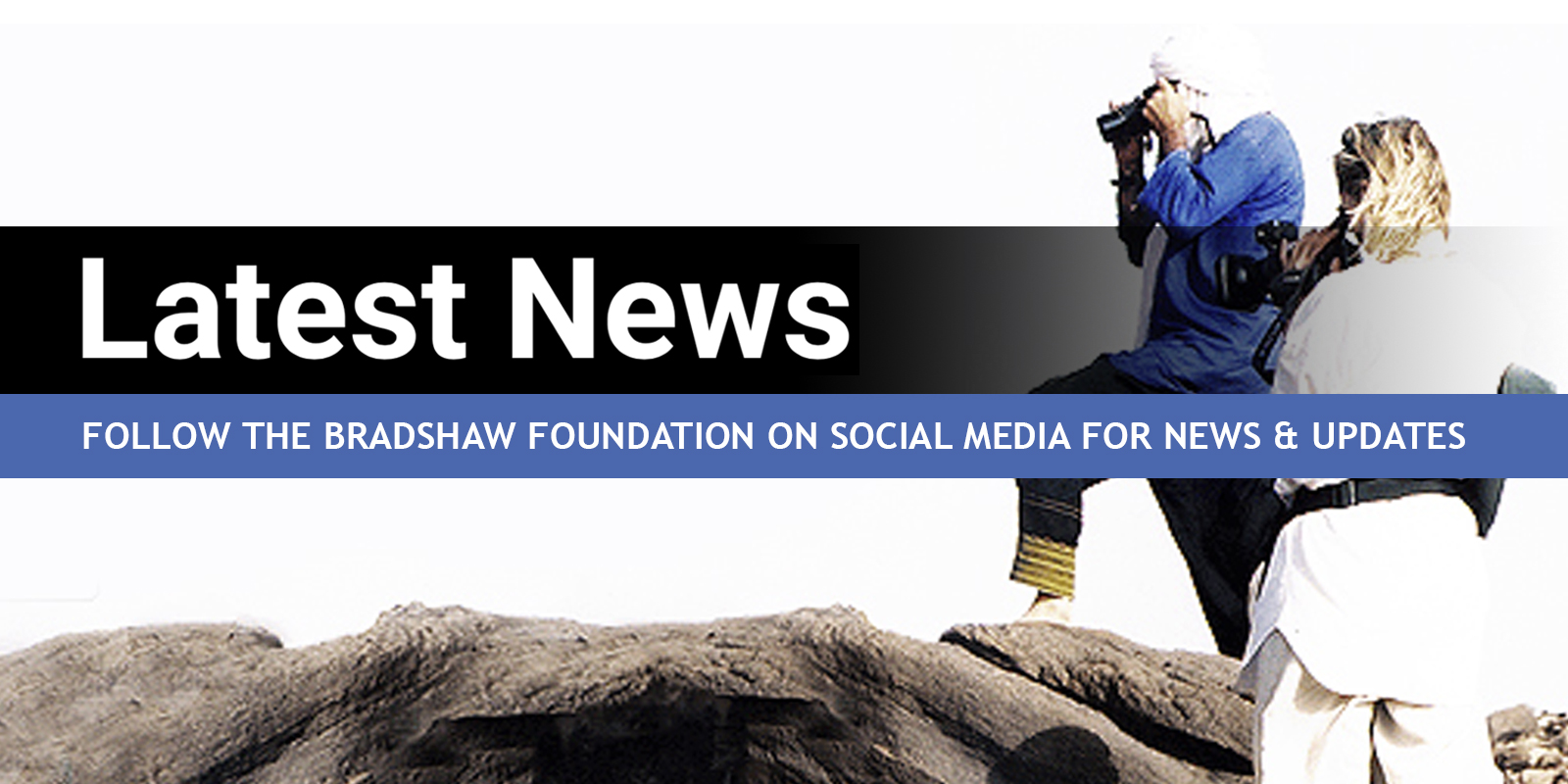
An online article by Anne Minard on Indian Country Today - The Battle For Mesa Prieta's Petroglyphs - reports on the future of the archaic rock carvings.
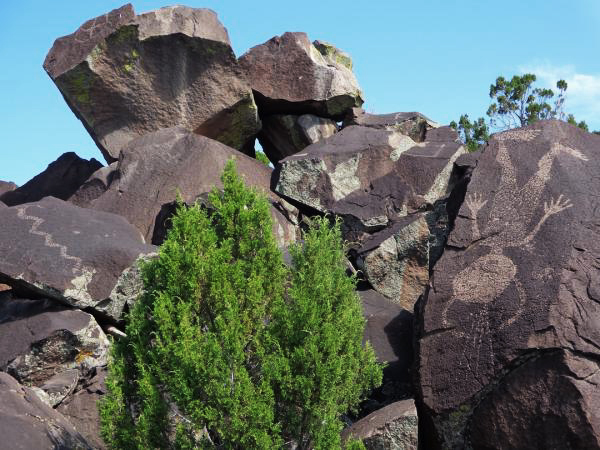
Ancestral Pueblo petroglyphs at Mesa Prieta. Image: Anne Minard
Mesa Prieta rises above the Rio Grande Valley in remote country west of Santa Fe, New Mexico. Tens of thousands of petroglyphs adorn rock faces across the 36-square-mile area. They date from the time of Puebloan ancestors as recent as 1,000 years ago, to archaic visitors 3,000 years ago or more. Potshards, arrowheads, water management features and structures go back as far as 7,500 years.
However, most of the area is privately owned, and afforded no protection, which concerns Joseph Talachy, governor of the nearby Pueblo of Pojoaque.
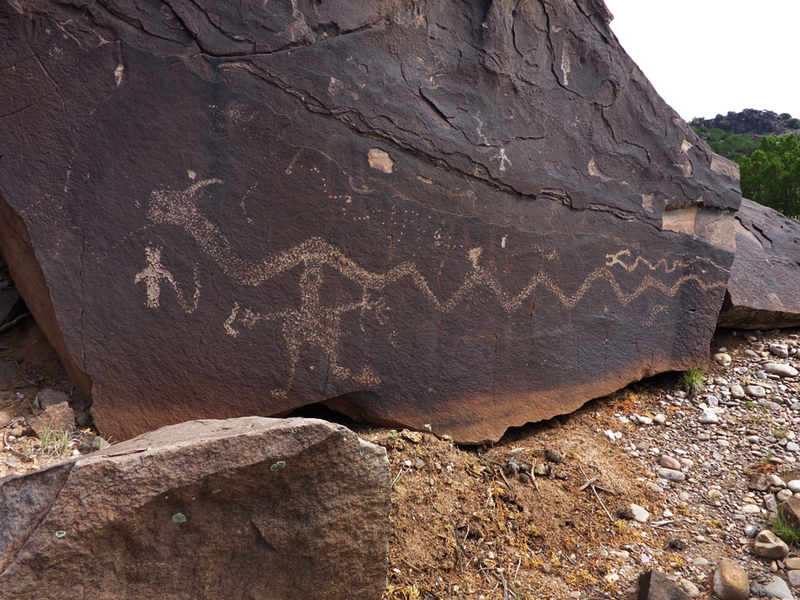
Image: Anne Minard
The movement to protect the area began in the late 1980's with one of the landowners, who donated a nearly 200-acre tract at the bottom of the Mesa to the Archaeological Conservancy; that became known as The Wells Petroglyph Preserve, named after the owner, Katherine Wells.
In the late 1990's, Wells helped to start a nonprofit called the Mesa Prieta Petroglyph Project, through which a small band of neighbors began to inventory the petroglyphs and other artifacts. They've now documented more than 45,000 petroglyphs across the Mesa, and estimate that there are actually up to 75,000. The site contains more petroglyphs than both Petroglyph National Monument near Albuquerque, which harbors 27,000, and the Bureau of Land Management's Three Rivers Petroglyph Site in south-central New Mexico, which boasts 30,000.
The Puebloan art is still white enough to stand out against the dark, volcanic rock. The rock art depicts serpents, shields, human figures including flute players, game animals of all kinds, and even religious icons chronicling the arrival of Catholics who moved into the area starting about 1600. 'Archaic' art, some of it 2,000 years old and older, has been gradually darkening and fading with time. Sometimes, petroglyphs spanning thousands of years co-exist on the same boulder faces, causing the researchers and Pueblo observers to wonder if the more recent artists noticed the older forms already there.
The Mesa includes some BLM land, but is primarily private. One of the landowners, a member of a prominent local family, has offered to sell his nearly 9,000 acres for $15 million; the tract includes the heart of the mesa. The landowner, Richard Cook, wants the sale to go to an entity that will protect the land; he has been allowing access for tours and the inventories, and patiently awaiting the efforts of the Pueblo and Mesa Prieta Petroglyph Project.
Jane MacKenzie, an archaeologist and coordinator for the Project, has been leading surveys and documentation of the petroglyph sites. More than 35 volunteers are trained to do the work of mapping and documenting the cultural resources. The group also leads a hands-on youth education program in the summers, something Talachy has said he'll support even if the Pueblo ends up controlling access to the land.
Joseph Talachy has been working to enlist the support of the All-Pueblo Council of Governors, which includes all 19 New Mexico pueblos plus one, Ysleta del Sur, in Texas. The Eight Northern Indian Pueblos Council including the pueblos of Nambe, Picuris, Pojoaque, San Ildefonso, Tesuque, Santa Clara, Taos and Ohkay Owingeh, has also pledged its support to protect the area.
The next stage will be to obtain support from the National Congress of American Indians. With all that backing, Talachy believes that supporters of Mesa Prieta will have an easier time securing either grant funding to purchase the land, or a federal designation to protect it.
He states: "We have an opportunity here to preserve what's left of this land and keep it for our children, and their children, so they can see, and get a taste of who we are and where we come from."
Visit the American Rock Art Archive:
by Bradshaw Foundation
Wednesday 23 July 2025
by Bradshaw Foundation
Thursday 29 May 2025
by Bradshaw Foundation
Monday 03 February 2025
by Bradshaw Foundation
Monday 30 May 2022
by Bradshaw Foundation
Wednesday 19 January 2022
by Bradshaw Foundation
Thursday 06 January 2022
by Bradshaw Foundation
Tuesday 21 March 2023
by Bradshaw Foundation
Tuesday 07 February 2023
by Bradshaw Foundation
Thursday 19 May 2022
by Bradshaw Foundation
Monday 04 December 2023
by Bradshaw Foundation
Friday 30 June 2023
by Bradshaw Foundation
Thursday 06 April 2023
by Bradshaw Foundation
Friday 14 July 2023
by Bradshaw Foundation
Monday 22 November 2021
by Bradshaw Foundation
Tuesday 12 July 2016
by Bradshaw Foundation
Tuesday 26 November 2024
by Bradshaw Foundation
Monday 27 November 2023
by Bradshaw Foundation
Friday 07 October 2022
by Bradshaw Foundation
Wednesday 23 July 2025
by Bradshaw Foundation
Thursday 29 May 2025
by Bradshaw Foundation
Monday 03 February 2025
by Bradshaw Foundation
Monday 30 May 2022
by Bradshaw Foundation
Wednesday 19 January 2022
by Bradshaw Foundation
Thursday 06 January 2022
by Bradshaw Foundation
Tuesday 21 March 2023
by Bradshaw Foundation
Tuesday 07 February 2023
by Bradshaw Foundation
Thursday 19 May 2022
by Bradshaw Foundation
Monday 04 December 2023
by Bradshaw Foundation
Friday 30 June 2023
by Bradshaw Foundation
Thursday 06 April 2023
by Bradshaw Foundation
Friday 14 July 2023
by Bradshaw Foundation
Monday 22 November 2021
by Bradshaw Foundation
Tuesday 12 July 2016
by Bradshaw Foundation
Tuesday 26 November 2024
by Bradshaw Foundation
Monday 27 November 2023
by Bradshaw Foundation
Friday 07 October 2022
by Bradshaw Foundation
Tuesday 19 November 2024
by Bradshaw Foundation
Wednesday 22 May 2024
by Bradshaw Foundation
Friday 10 November 2023
Friend of the Foundation
